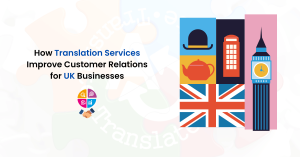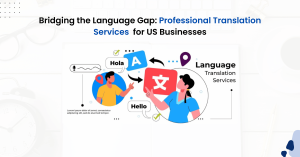The aim of this article is to try to figure out why people should choose to go to a Translation company, or to a translator in general, to get a translation of a text.
Nowadays, we find ourselves in the era of Google and by searching in internet we can find tools and websites such as Google Translate, online dictionaries, online translators, CAT Tools, that do translations completely for free.
As a translator and member of a Translation company, I will explain in this article why and when it is necessary to ask for a professional translation instead of using computers and automatic translations.

In some cases, I am the first one to be enthusiastic about the simplicity of using internet for translating, it is so useful, quick and easy that anyone can do it, without requiring any specific competence. But I must admit that Google Translator is not always as fabulous as it seems, and not even the most complete dictionary could ever really translate the meaning of some particular phrases, maintaining the original tone and style of the original text. For these reasons I firmly believe that no book, no software, no website could ever replace a bilingual person who is able to think, understand and speak in different languages.
So, let’s begin by analysing what online translators consist in, and what are they useful for.
We must keep in mind that they are essentially machines and they use a mathematical, statistical method, called SMT. This technique works by associating algorithms of different systems (that means different languages) and as a consequence, the more parallel the algorithms are, the better the translation will be.
In order to explain this fact, let’s consider phrases like “Thank you” or “You’re welcome”.
In every language there is a simple and perfect correspondence of these expressions, which makes it is easy for a machine to associate them and to translate them from a language (a system) into another one.
BUT, if we think of languages that do not have a large number of parallel structures and expressions -for example English and Basque -, the quality of the online translation will be lower, because the machine cannot always associate algorithms of these two systems.
This is due to the fact that the SMT method has no knowledge about the syntax or semantics of natural languages, and hence it cannot make reasonable decisions about the meaning of a text when there are multiple ambiguous options.
Only a human person can make such decisions, such reasoning, and no other.
Here is another example: let’s take an English full text and translate it into French.
If a human translator does that, he will firstly read the entire text and fully understand it, so that he will be able to write a document with the same meaning in French.
What Google Translator does, on the other hand, is to look at each word of the text and find a statistical relationship between that single element and the one of the “target” system. Then, the final output will be merely a result based on these parallel relationships, it will not take into account the structure or the meaning of the English content. The SMT method just chooses between words and alternatives, based on the order these words have in the English content, and on the probability of their occurrence.
It can be even worse in case we need a translation between languages that have completely different syntax: English and Japanese, for example. As a matter of fact, words with corresponding meanings could have completely different positions in the structure of the sentence, and thus the syntax or the basic grammar rules would be completely transformed. This would make it difficult to build a correct sentence or even re-create it in the target language, and a SMT system would absolutely not be the good tool to do it.
It is clear that this type of translation is a mathematical and statistical one, that does not take into account anything of the general meaning, the context, and all the differences between the two “systems” that are grammar, linguistic structure and syntax, but also different culture, style, cultural attitude, and so on.
I hope that my short explanation can be useful for all those who use Google and other automatic translators without knowing how they work or in which way they provide us translations.
I do not want to convince them not to use it, but just to use it in the right way and be warier in the future.
As a conclusion, I must admit that Google Translator gives us a quick, easy solution at our fingertips, but it is not always a good idea to trust this instrument no matter what we are using it for.
It is essential to use it wisely, and to be always aware of its mechanism and its limits, because if we use it in the wrong way, it can ruin our translation, instead of making it simpler.
A translator (a human one) has the knowledge not simply of the correspondence between words, grammar, syntax or phrases, but also they know how a language works, and above all they can understand how different cultures can intervene in translating content from one language into another one.
This familiarity comes from their direct experience, and a mathematical or statistical method, even if it is perfect, will never be able to be as skilled as them.
My final thought is this: the most interesting thing of a text, any language it is written in, it is that it has been written by someone, not something.
It is only your decision, then, to choose between a free online translation or a more expensive one, done by a translation company, but please keep in mind the difference between the two.
By Sara Rizzo










